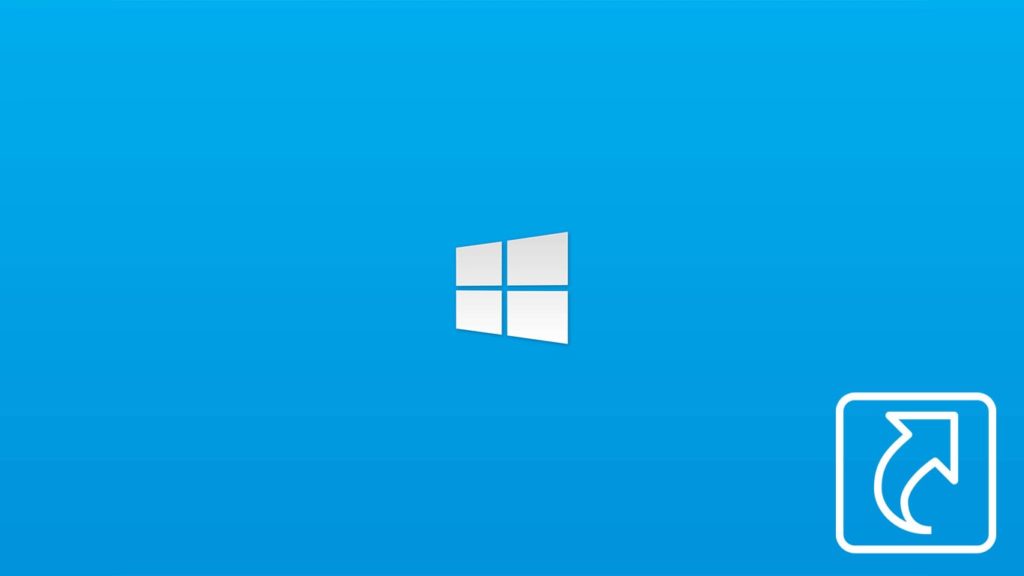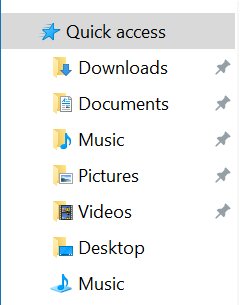
Quick Access, as part of This PC or File Explorer, can aid productivity in a big way. Besides showing recently opened folders and files, you can also pin frequently used files or folders, creating a shortcut. The problem is, many users disable or unpin this functionality, never thinking they’d need it someday. Others suffer data loss or have operating system problems, and can no longer access it. In both cases, users would love to have it back, preferably identical to how it looked when they lost it.
Fortunately, this is possible. Here’s how to restore Quick Access in Windows 10.

Option 1. Restore Quick Access in Windows 10 via Folder Options
This is a beginner-friendly way to make Quick Access appear in Windows 10 again:
- Open This PC or File Explorer.
- Click on the View menu in the upper left corner.
- Select Options, then Change folder and search options.
- In the General tab, navigate to the Privacy section.
- Put a checkmark in front of Show recently used files in Quick access and Show frequently used folders in Quick access.
- If you want to make all the recent and pinned items appear again, do not click on the Clear button.
- Click on Apply, then OK, and close all the windows.
- Upon reopening File Explorer or This PC, Quick Access should be visible.
Option 2. Reset folders to default view settings
If there were no changes with the method above, it means that Quick Access is hidden. This is common with GUI software that adds functionality to File Explorer, or if you’ve used a .reg or .bat script to hide it in the past. So, do this to make Quick Access reappear in Windows 10:
- Repeat steps 1 through 3 above.
- Switch over to the View tab.
- In the Folder views section, click on the Reset Folders button.
- When prompted, click on Yes.
- Close all windows, relaunch This PC or File Explorer, and problems with Quick Access should be solved.
Option 3. Restore Quick Access in Windows 10 via Command Prompt
Here are 2 ways to recover Windows 10 Quick Access using Command Prompt:
1. Delete all items and start fresh
If you want to start anew, you can get Quick Access back in Windows 10 like this:
- Open the Start menu.
- Type “cmd” and when it highlights Command Prompt, click on Run as administrator.
- Paste the following command:
del /F /Q %APPDATA%\Microsoft\Windows\Recent\AutomaticDestinations\* - Press Enter, close the window, then reopen This PC/File Explorer.
Tip. If you used this method before making a backup as we suggest below, follow this guide to recover a deleted Windows 10 folder.
2. Make a backup beforehand
If you want to create a backup of current Quick Access items, even if they’re currently invisible, do this:
- Make a new folder in the root of the C:\ drive and name it however you want. We’ll name it QAitems.
- Repeat steps 1 and 2 above.
- Paste this command:
robocopy %APPDATA%\Microsoft\Windows\Recent\AutomaticDestinations “C:\QAitems” - Press Enter and wait for the process to complete.
- Use the command mentioned above to wipe Quick Access data.
- Now, do the reverse to restore Quick Access data:
robocopy “C:\QAitems” %APPDATA%\Microsoft\Windows\Recent\AutomaticDestinations - Close File Explorer, then relaunch it to see if you fixed the missing Quick Access problem.
Option 4. Make Quick Access reappear in Windows 10 via Registry Editor
Now comes the scariest method for most users, as it involves editing Windows 10 registry. However, this is safe if you follow instructions to the tee. Here’s how Quick Access restoration in Windows 10 using Registry Editor works:
- Open the Start menu.
- Type “regedit” and when Registry Editor gets highlighted, click on Run as administrator.
- In the address bar at the top, paste this:
Computer\HKEY_CURRENT_USER\Software\Microsoft\Windows\CurrentVersion\Explorer\Ribbon - Press Enter. If nothing appears, expand the folders in the left sidebar in the same order as above, one by one.
- Inside the Ribbon folder, on the right-hand side, you’ll see a binary DWORD named QatItems).
- Right-click on the binary DWORD, then select Delete.
- When asked whether to delete the value, click on Yes.
- Close Registry Editor and reopen File Explorer/This PC.
- Quick Access items should be regenerated. If they aren’t, restart your PC and check again.
FAQs about restoring Windows 10 Quick Access
Quick Access is a feature in Windows 10 that provides easy access to frequently used folders and recently opened files on your computer. It’s located in the File Explorer and is specifically designed to streamline file and folder management.
Windows Quick Access can disappear due to various reasons, such as Windows updates, as a result of some system changes, or user preferences.
Editing the Windows Registry can be risky if not done correctly. It’s always recommended to back up your Registry before making any changes. If you’re not comfortable with this process, consider using other methods to restore Quick Access. Especially if you are a beginner.
You can definitely disable Quick Access if you prefer not to use it. This process can be achieved through File Explorer options, where you can choose to open File Explorer to a specific folder instead.
Yes and No. It depends. Restoring Quick Access can enhance your file management experience by providing quick access to frequently used items. However, its impact on your experience depends on your preferences and how you use your Windows-based computer.
